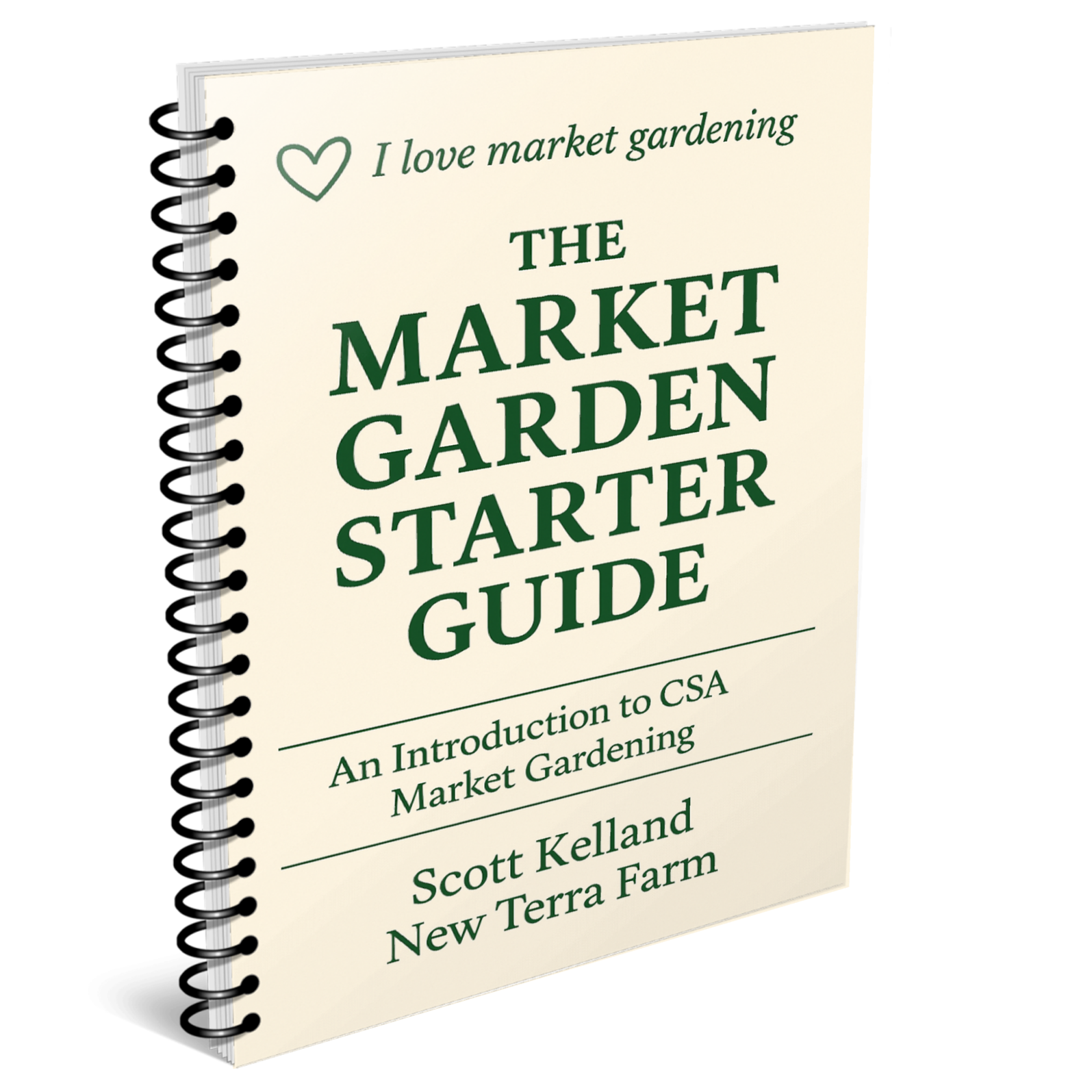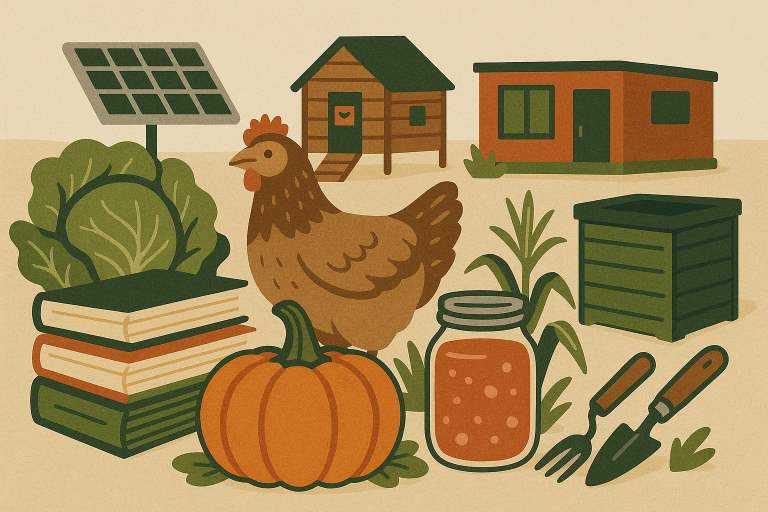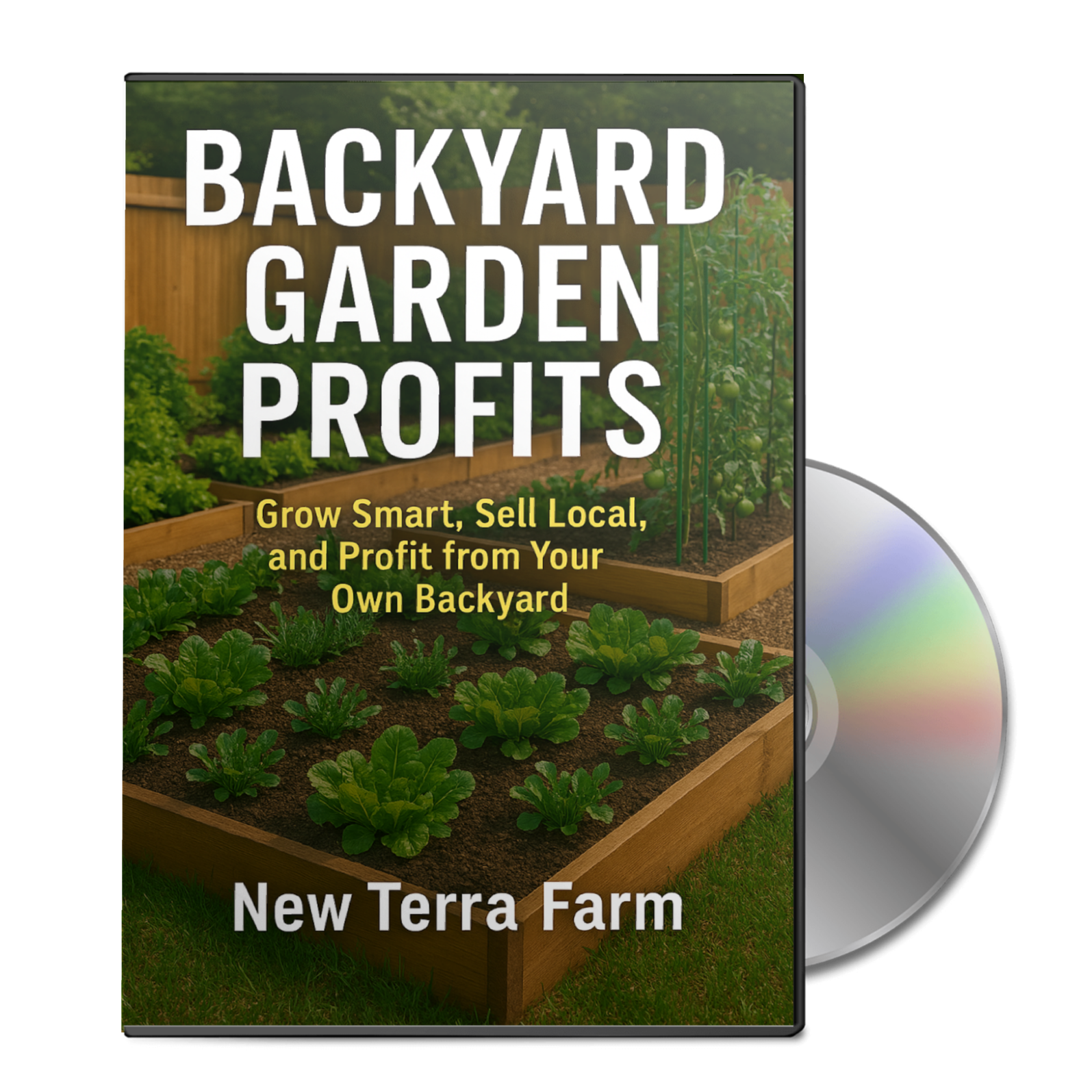Market Garden Crop Planning For Consistent Harvests and Higher Yields. There's a system to effective market garden crop planning There's a system to effective market garden crop planningPicture this: you start a small market garden with energy and enthusiasm, a handful of seed packets, and a few raised beds you built last season. You imagine rows of tomatoes ripening in the sun, baskets of greens going to market, and maybe even a few CSA customers raving about the freshness of their weekly share. But pretty quickly, that dream runs headfirst into the messy reality of growing for profit. You fall behind on key tasks. Garden yields (and profits) aren't what you had hoped. What’s missing from the picture? Market garden crop planning. Carefully Curated Resources For The Homesteader and Prudent Property Owner The world seems to be a little unsettled these days. I'm always looking for ways to make New Terra Farm more self-sufficient and productive. Here's a few of the best ways I've found to make self-sufficiency happen. Useful Homesteader Resources Without a solid crop plan, things get complicated fast. Beds fill up with crops that mature all at once; or not at all. You run out of space before you've planted half your list. You find yourself trying to sell beets no one wants while running out of lettuce at peak demand time. Not optimal! That may not matter much for a hobby gardener who’s happy with whatever grows. But if you want to earn income from your garden, even as a part-time side hustle, you can’t afford that kind of uncertainty. A Garden That Works Like a
Business
Now picture a different garden. One where every crop is there for a reason. Every bed has a role and a rotation. Every harvest lines up with an actual sales opportunity. Nothing is random, and nothing is wasted. That’s the kind of planning that separates a backyard garden from a backyard business. A business is made up of systems. With a good market garden crop plan, you’re not just planting vegetables, you’re managing a system. In this garden, you start the season not by reading seed catalogs, but by identifying who your customers are and what they want. You know what you CAN sell them because you know your frost dates, your harvest window, and your available space before you plan a single crop. And when you choose what to grow, it’s not just based on what you like to eat; it’s based on what sells. You select each crop for value, timing, and ease of production. You map out succession plantings and calculate how many units you need to hit your sales goals. If your CSA customers want beets every other week, you work out how many bunches per delivery, how many seeds to start, and how many weeks it’ll take to mature. You added a buffer for crop loss and built in enough redundancy to handle surprises. And, your plan reflects your availability and your infrastructure. You’ve matched your tools to your layout. Your 50-foot beds are irrigated with 50-foot soaker hoses, and your plastic mulch fits your beds because you planned for that. You know when to start cool season greenhouse crops and when to transition to main season growing. You’ve timed transplanting and harvests so you’re not overloaded with work in any one week. With this system in place, your garden becomes much easier to manage. You’re not scrambling to fix problems; you’re preventing them before they happen. You know what’s going in the ground each week, and you’ve got the transplants ready ahead of time. You’ve adjusted for longer maturation periods in the fall, and you’ve scheduled your last plantings accordingly. Does this level of market garden crop planning take more research and work? YES. But the payoff is consistent yields, satisfied customers, and predictable profit. How You Get From One To The OtherSo how do you move from scattered focus to a smooth-running, profitable garden? The bridge is strategic crop planning. That means building a plan that fits your space, your season, and your market, and then working that plan. You begin by understanding your frost-free window. In our case at New Terra Farm, that’s roughly May 11 to September 28. That gives us about 20 weeks of reliable growing time. From there, you plan backwards using crop days-to-maturity and transplant schedules to determine seed start dates. For each crop, you calculate how many plantings can fit in that window and which weeks the beds will be in use. We use a simple tool to map this—our crop availability schedule. It’s basically a spreadsheet that tells us what will be ready, and when. We build it using frost date data, maturity rates from free resources like Johnny’s Seeds Growers Library, and our own field notes from past seasons. It's both a sales tool when talking to customers and a production guide. Then you evaluate your space. For example, a 5,000 square foot plot would give you about 4,000 square feet of bed space when you allow for paths. You could lay that out as forty 100-square-foot beds, to support matching crops to beds in a rotation that maximizes yield while maintaining soil fertility. The key is knowing not just when to plant, but when each bed becomes available for replanting. For example, if your bush beans are harvested in late July, that bed might be perfect for a fall crop of greens. Our goal is to plant what’s profitable, not just what’s possible. A large part of our garden is planted to high-value, short-season crops we know will sell. Early carrots, salad greens, beets, and bunching onions are reliable earners. We also time our crops around our market days. For CSA deliveries starting June 15, we count backwards to direct seed carrots in March and transplant broccoli in early April to hit that target. How do we know what will sell? Before we plant anything, we talk to our customers. Chefs tell us what they want. CSA members respond to flyers. We track those conversations and build them into our crop list. If six families sign up for a share and want beets, that translates into a specific number of bed feet and a start date. The final, and very important part of this system: keep records. We track seeding dates, harvest volumes, and losses. We adjust our plans based on what worked and what didn’t. And every spring, we start again with better data and sharper focus. What you end up with is not just a crop plan—it’s a map to profitability. Backyard Garden Profits is a practical guide for the aspiring market gardener aiming to transform small plots into profitable ventures. You will learn actionable strategies for space-saving, smart planting, and high-yield techniques. Follow a simple four-step system - Focus, Preparation, Execution, and Review - to work through setting sales goals, planning efficient garden layouts, implementing advanced planting methods, and continuously improving garden operations.  The consumer demand for fresh local organic food has never been higher. Bad news on the supply chain is good news for local growers. Get my free Organic Market Gardener Start-up Guide and see if this is the right time to launch your CSA market garden business. Enter your email and get instant access to the Guide. Got questions to ask, stories to tell?Share your organic market gardening question, or comment, or story. Recent Articles
|





